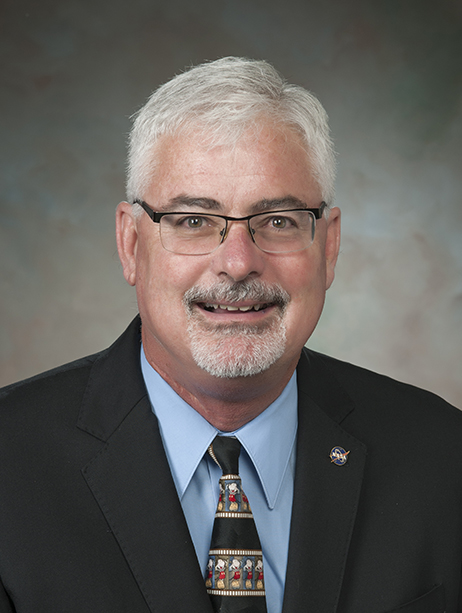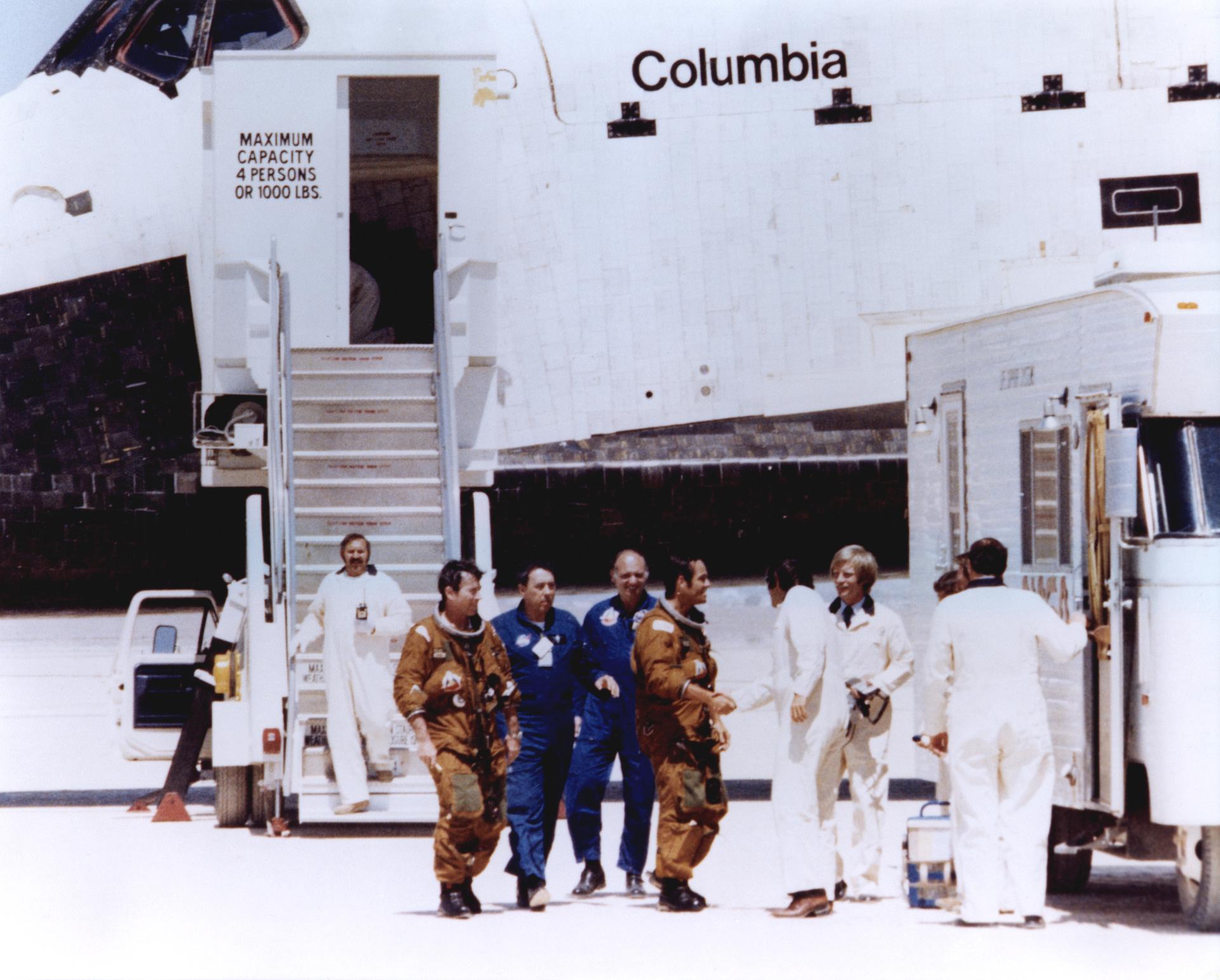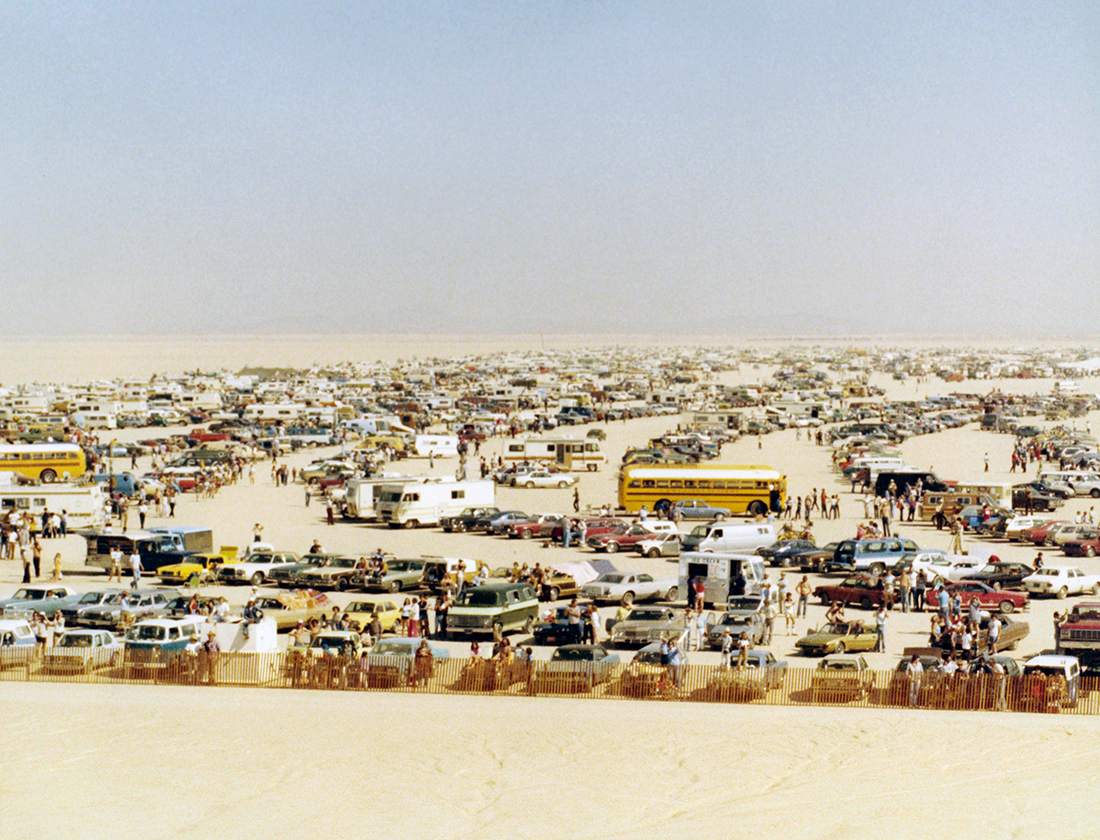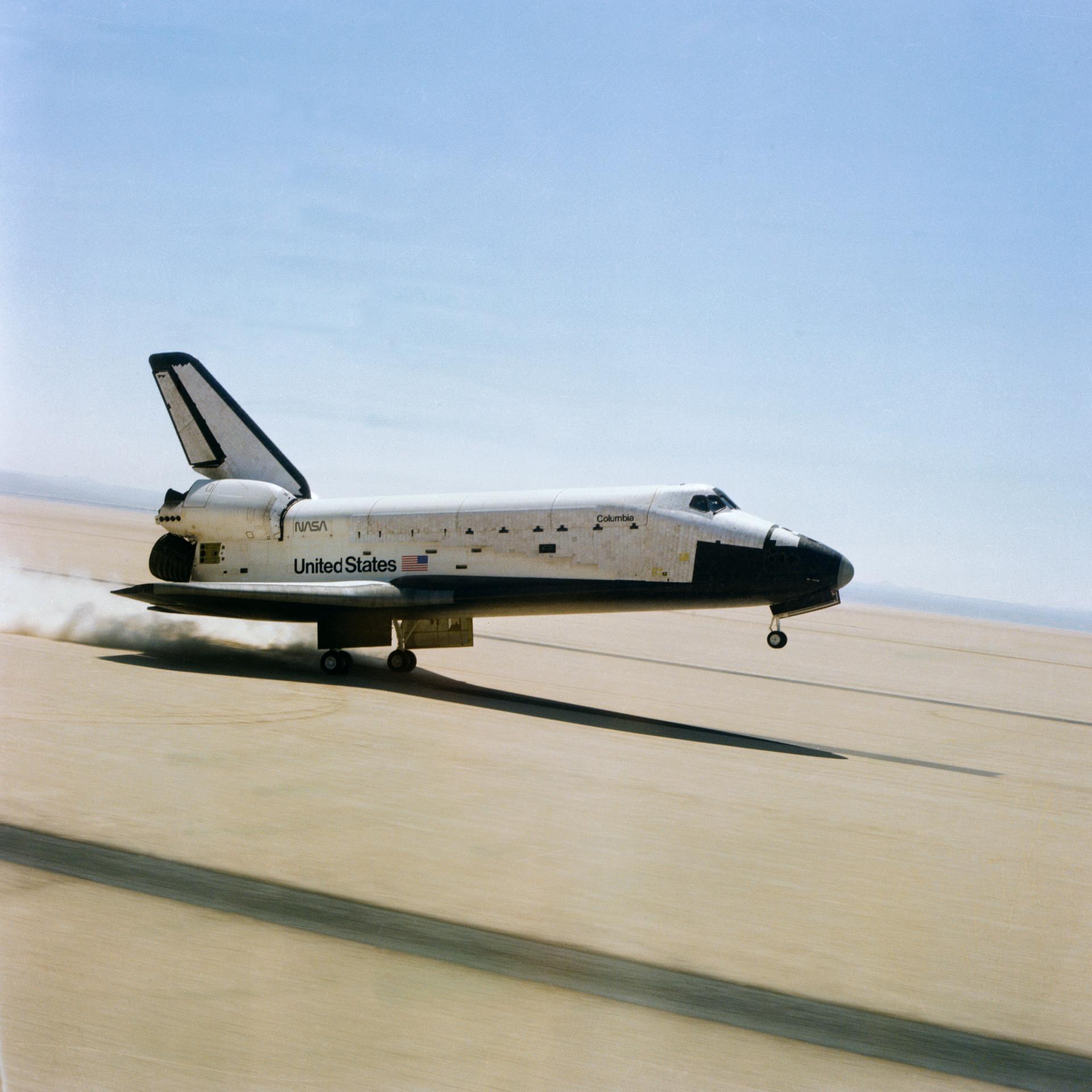
Patrick Stoliker began to scan the sky as he heard the loud double boom. He and about 320,000 spectators knew that sound signaled the re-entry and soon landing of Space Shuttle Columbia on a dirt runway on Rogers Dry Lake, adjacent to NASA’s Armstrong (then Dryden) Flight Research Center in California.
Shuttle commander John Young and pilot Robert Crippen completed the 54-hour first space shuttle mission, which is considered one of the boldest test flights in history and which ushered in a new era in human space flight.
April 14 marks 40 years since that milestone happened, but in many ways some details are as vivid as if it was that clear, calm day. Stoliker, who was a 25-year old graduate student in 1981 at the University of Southern California, Los Angeles, now is the deputy director at Armstrong.
He and some friends drove from USC north to Lancaster, where his family lived, when Columbia was set to land. Stoliker’s father, Fred, was technical director at the Air Force Flight Test Center (now known as the Air Force Test Center) at Edwards, California, and had passes to the shuttle landing.

The family motor home departed early the morning of Columbia’s landing for the air force base main gate with Stoliker, his family and his friends. In addition to a wide open view of the skies where they were parked by the rock formations on Rosemond Boulevard, Stoliker said he also could see the mass of people who came in cars, trucks, motor homes and buses to be a part of history.
“Seeing the mass of cars helped put it in perspective that this was a historical moment,” Stoliker said.
“Following the double boom people scanned the skies for the orbiter and watched as it landed,” he recalled. “Columbia rolled to a stop and the Star-Spangled Banner began to play on the loud speakers. It was a very patriotic moment.”
There were many highlights that day, but there is one that stands out to Stoliker.
“I enjoyed sharing the day with my father,” he said. “Dad had worked at Edwards since the early 1950s and he had seen a lot of history occur. I was raised on the accomplishments at the air force base and took them for granted. I remember seeing the Enterprise Approach and Landing Tests, but this was something above and beyond that.”
After the landing, Stoliker, his family and friends, went back to Fred Stoliker’s office and waited for the traffic to clear from the base.
Stoliker had grown up with Mercury, Gemini and Apollo launches and, “it was right that the United States had a spacecraft again.”
Stoliker’s experience with the space shuttles began years earlier when as a cooperative education engineering student at Philips Laboratories (now the Air Force Research Laboratory), which is just up the hill from Armstrong. While there, he was able to view three of the flights of the Space Shuttle Prototype Enterprise as it was released from the back of a NASA 747 to an unpowered landing on the lake bed in 1977.
In 1992 Stoliker came to Armstrong as a senior aerospace engineer for PRC Inc. and became a government employee two years later assigned to the X-31A Enhanced Fighter Maneuverability project as the lead flight controls engineer.
“I always had tremendous pride in everything we do here,” he said. “The projects we take on and the people who work on them make my day, every day.”
One of those events can be seen on the main screen of Stoliker’s cell phone. Big and bold is an image of the Space Shuttle Endeavour on the back of the NASA 747 Shuttle Carrier Aircraft during its final mission. The aircraft landed at Armstrong and departed the next morning for a final flight along the California coast and for a landing at Los Angeles International Airport. From there, it was towed through the streets of Los Angeles to the California Science Center, where it is on display.
Stoliker’s book-ended his shuttle experience with seeing Atlantis make the final space shuttle mission on July 8-21, 2011.
“That was special to me, being able to see the first landing and the final launch,” he said.
See more about the center’s contributions to the space shuttle program here.





























